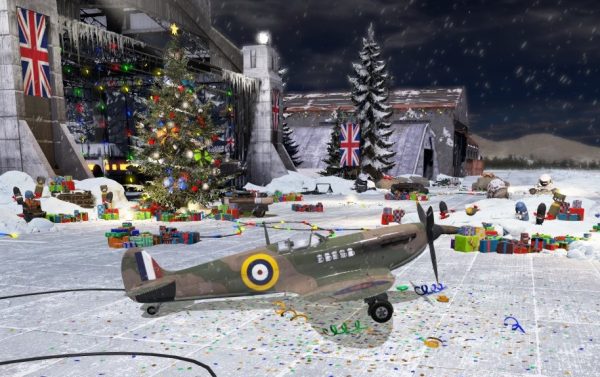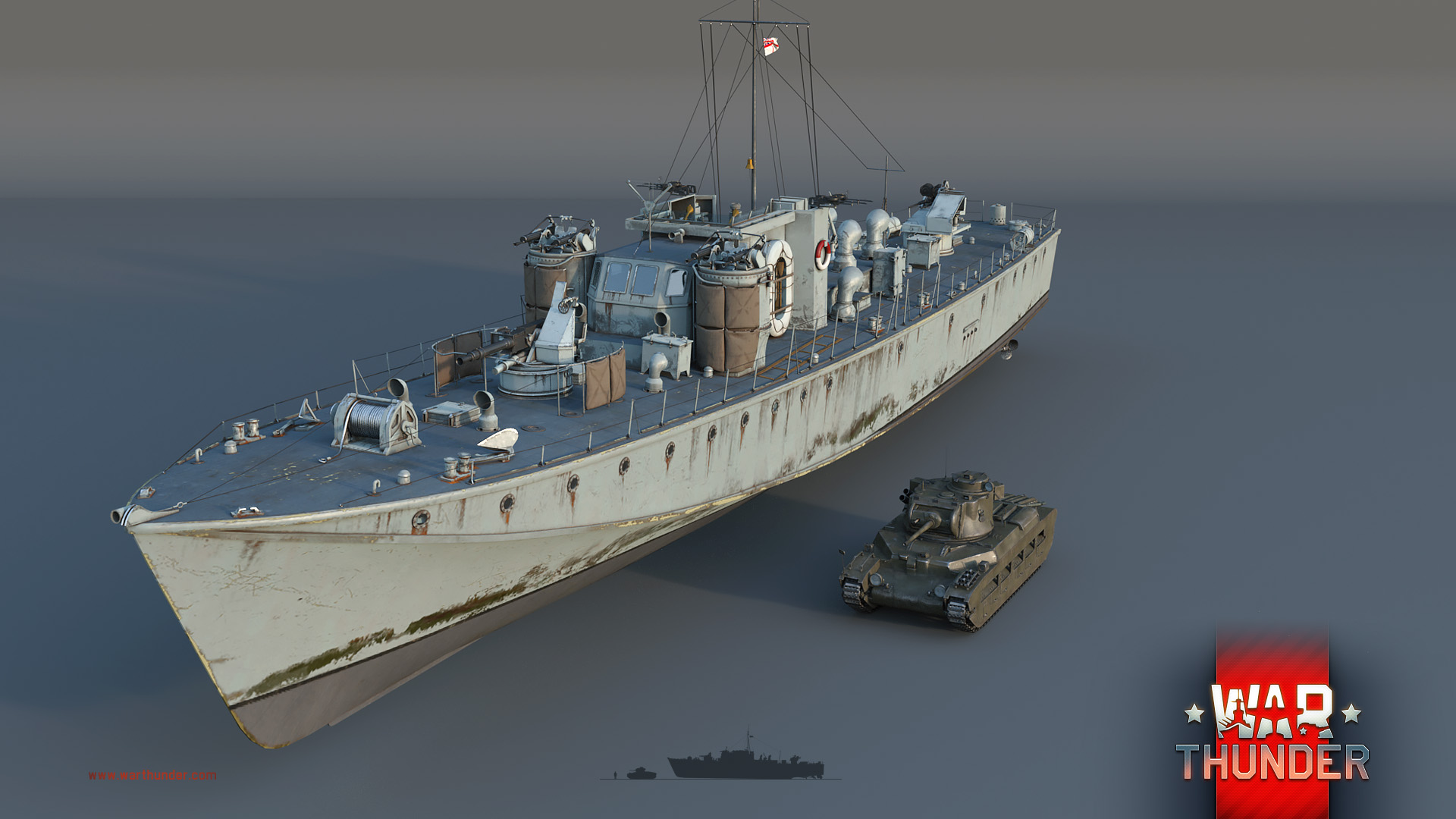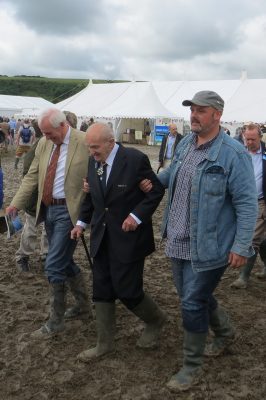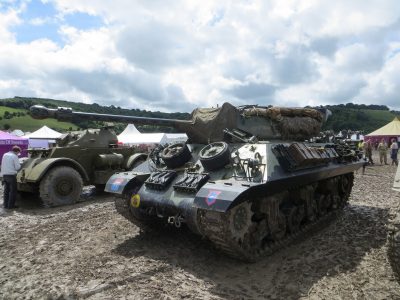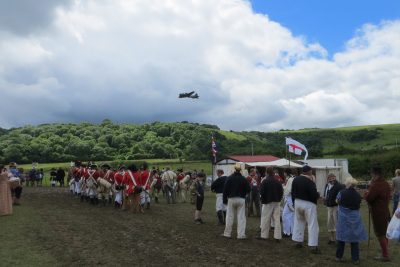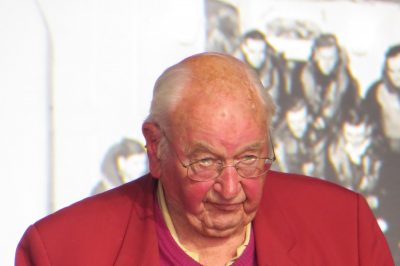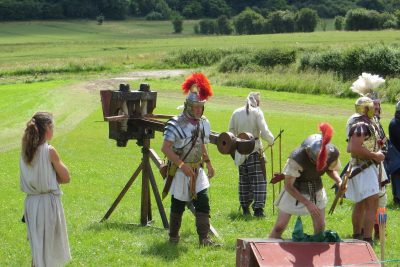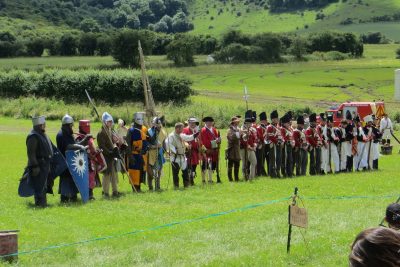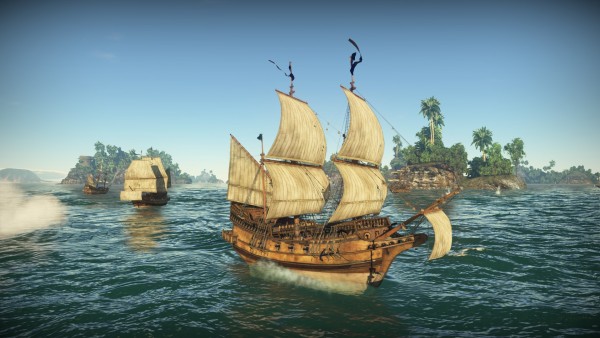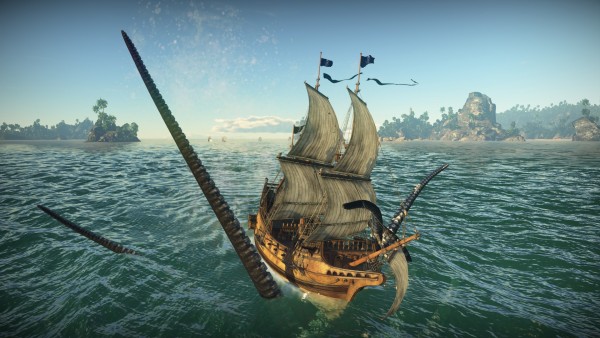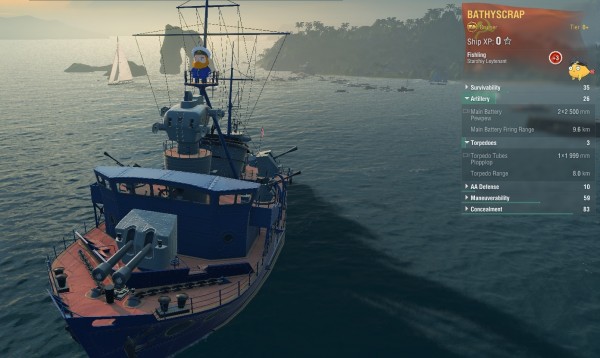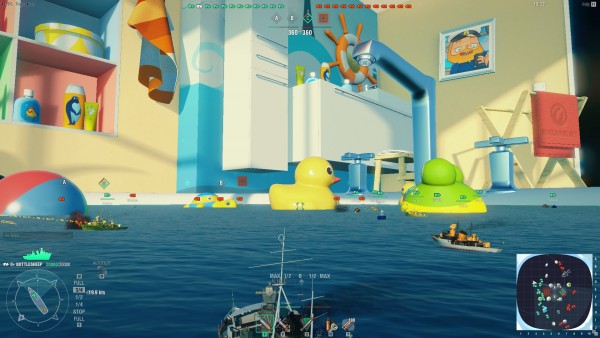The Wintersday event is active in Guild Wars 2, a series of challenges have kicked off in War Thunder, the Steam sale is bringing joy, happiness and cheap games to all; it must be Christmas! Have a splendid break one and all, let’s hope 2017 is a bit less “exciting” than 2016.
Not a charitable organisation, much though the evidence may point to our being reasonably tall
Friday, 23 December 2016
Tuesday, 6 December 2016
And the last known survivor stalks his prey in the night
I mentioned in the 10th anniversary post that The Division was a fine game that got rather repetitive in its endgame, and that I ought to have a look at the most recent update. Like healthy eating and regular flossing it was more of a vague intention than a firm commitment; I’d briefly popped back to check out the previous Underground DLC that added some randomised subterranean roaming, but it hadn’t proved terribly compelling.
The most recent update is titled Survival, and doing exactly what it says on the tin it adds a new game mode called “Attempting To Endure Extremely Hostile Conditions With Minimal Starting Equipment”, or ATEEHCWMSE as all the cool kids call it. Actually, it might be called “Survival” come to think of it. A fierce storm is forecast to hit New York but Because Of Some Plot (TM Van Hemlock) there’s an urgent need to retrieve a MacGuffin, and in a wildly unexpected turn of events the simple helicopter jaunt to grab said MacGuffin goes a bit wrong, leaving you stuck in the middle of a blizzard with only a pistol and a nasty cough. You have to scrabble around for warm clothes, food, water, medicine, weapons, and ultimately a compensation form to claim for the luggage lost in the helicopter crash (or possibly the antivirals that were the original point of the mission), then make it to an extraction point to evacuate.
Survival games have been in vogue since the blocky ubiquity of Minecraft and ah-but-who-are-the-real-monsters horror of DayZ, but I tend to flounder in very open worlds. In this respect the clear goal of Survival harks back more to Rogue: down to the heart of the dungeon/Dark Zone tooling up along the way, grab the Amulet of Yendor/Antivirals, home in time for ascension to demigodhood/tea and medals. You have an hour until you succumb to infection, a timer that can be extended with painkillers and medicine but not indefinitely, so you can’t faff around too much.
The new mode does put a nice new spin on The Division. I posted about STALKER: Call of Pripyat a while back, how my favourite part of the game was early on when every round of ammunition was precious and that it lost some its charm later on once geared up with advanced weapons and armour. The Division is handing out loot more freely now, which is much appreciated, but when knee-deep in maximum level gear and trying to work out the relative merits of slightly different gloves it’s quite fun to go back to a situation where you’re glad of anything, even canned food. It’s available in PvP or PvE modes, though I’ve only tried the latter so far; finding enough resources and dealing with AI mobs is quite tense enough without adding PvP to the mix. PvE still isn’t exactly co-operative; loot drops on a first-come first-served basis, meaning you can expend precious ammunition and health packs defeating tough mobs only for another player to swoop in and nick the gear they drop (as opposed to being shot in the back by the other player prior to them nabbing the loot, as presumably happens in PvP). A team with voice comms might be able to share much-needed food and medicine amongst themselves as required, but “I propose a mutually beneficial arrangement by which we collectively engage tough opponents and equitably divide any resulting bounty” is quite difficult to convey to a random stranger via a limited set of emotes, so generally it’s best to steer well clear of other players. The situation pivots a bit should you reach the Dark Zone; by that time you’ve probably got a reasonable amount of kit so aren’t so desperate for every drop, and when you call in a helicopter for extraction you’re confronted by Hunters, new super-mobs with lots of nasty tricks like ducking into cover and healing after taking a bit of damage who are rather tough to take on solo.
Survival has some of the same highs and lows of Rogue/Nethack: on one expedition you might get tooled up with enough weapons and armour to be able to take on anything but not find any medicine; on the next you’re wrapped up lovely and toastie in coat, boots, scarf and bobble hat and can wander around at leisure but lack any weapon more threatening than a pointed stick so get jumped by rioters. It’s not quite so variable, the map remains constant (New York is New York, after all) and loot containers spawn in the same places (though can contain different items). Random starting locations and unpredictable players have made every round fairly different enough far, but a little more variety might be needed in the long run. After a few attempts you get the hang of the basics, staying warm and accumulating loot, then it’s a fairly methodical process to get to the Dark Zone, and a rather abrupt difficulty spike with the Hunters at the extraction zone that can be quite frustrating.
I’m not sure Survival as it stands it worth the cost of the DLC, but if you have the Season Pass anyway or there’s a sale sometime it adds another interesting string to The Division‘s bow, I can see myself popping back in from time to time, especially if it gets a couple of additional options.
Sunday, 4 December 2016
Gaming with Mini-M
Went out for a walk with Mini-M to hunt for Pokemon last night. At one point we were deep in conversation and I wasn’t looking where I was going and walked into a low hanging leaves from a tree.
“Ack, I’m being attacked by a tree” I said as I flailed about.
“Roll for initiative!” Mini-M said, without breaking a beat.
The Sunday Morning Adventure Club were in a Fractal in Guild Wars 2 and I was talking Zoso through the boss fight.
“So the boss is now invulnerable and we need to take down the three golemns that have spawned, then back to the boss, then two more will spawn on…”
“Hey, look, there’s a temple or something down there!” Mini-M said, somewhat distracted over on a different section of the platform.
“OK, that’s great, we’ll have a look after the fight, could you just come back and attack…”
Too late. Mini-M was already in mid-leap with a cry of “I regret nothiiiiiiiing!”
Me: “Mini-M, be careful not to catch your mic or we all get the crackling on voice comms”
*tap tap tap tap tap*
Me: “Mini-M…”
*tap tap tap tap tap*
Mini-M: “I’m build up daddy’s Enrage bar…”
Starting a Fractal, the team are trying to remember what the encounters involve…
“Is this the one with the plants and the beam?”
“No, I think it’s jumping between platforms…”
Mini-M explains which dungeons those two actually are, and which boss we’ll actually face in this one.
“Just wait ’til you’re our age, Mini-M, you’ll have as much trouble remembering.”
“I don’t want the Old Person debuff. The older you get, the more debuffing it does.”
“Daddy, what’s ‘run away’ in Latin?”
“Um. I don’t know. Let’s see… the internet suggests ‘Effugitus’. Why do you need to know?”
“Oh, just updating the guild motto…”
It turns out you can multitask in this game, I was browsing new gliders in that boss fight.
I’m not being contrary, I’m just disagreeing with you.
Bad guys on my tail in both senses, because I’m transformed into a Charr so I actually have a tail, though they’re both spelt the same way and… LOOK THEY’RE CHASING ME OK!
Monday, 28 November 2016
10th Anniversary
Don a small conical cardboard hat, bake a cake and place ten candles thereupon, hide behind a sofa and prepare to leap forth and shout “surprise” for the Earth has spun around a giant burning ball of gas ten times since words first appeared on this here thing known to some as a “blog” (or at least its predecessors, which have since been subsumed herein so it still counts and stuff).
10 years, eh? Gosh and crikey; back then Tony Blair was Prime Minister, the iPhone was yet to be unleashed on the world, and making cakes in a tent wasn’t a matter of national importance. Different times. Melmoth and I had been MMOing for a few years, Melmoth on the console with Phantasy Star Online and the PC with Dark Age of Camelot before jumping in to City of Heroes, which was my introduction to the genre. We played CoH on a US server before the official European release, in those crazy days of MMOs before World of Warcraft; when WoW itself came along we naturally ventured in to Azeroth along with the rest of the known universe.
By late 2006, then, we had a bit of campaigning under our belts. Not proper Old Guard stalwarts from Ultima Online, Meridian 59, or indeed MUD1, but we’d been hyped up and burned out over a few games, got to the level cap in a couple of them (at least if you added up Melmoth’s City of Heroes alts), done a bit of beta testing (the late not-particularly-lamented-though-I-quite-liked-it Auto Assault, possibly one or two others though the old memory is a bit hazy); enough to have made it out of the Young Guard, at least.
The whole “web two point oh” business was starting to gather steam back then (as, indeed, was Steam), and after stumbling across and commenting on a few MMO blogs it seemed like a natural step to take the plunge ourselves, signing up individually with Blogger. I like to think we took to the new format like a duck to blogging: swimming around quacking loudly and demanding bread from passers by.
There was plenty going on for MMOists. The huge success of World of Warcraft had made the games industry sit up and take note, any number of new and potentially interesting games were releasing or in development. WoW wasn’t resting on its laurels with its first expansion, The Burning Crusade, imminent. Blogworthy subjects pinged back and forth across the blag-u-spore (as they had for years before) sparking further posts like neutrons in uranium-235 (complete with occasional fallout when things got a bit too excited).
By 2008 the shiny new blog smell had worn off a bit, and it was starting to look like shades might not be required to deal with the brightness of the post-WoW MMO future after all. Duo-ing in an MMO often strikes a sweet spot, amplifying the power of each character without the administrative overheads of larger groups, so it seemed worth a try on the blog front. Seeing the glorious success of Choco Krispies and Consignia we hired some enormously expensive consultants for a rebranding exercise, and came up with the very site that you now sit reading (unless the content has been scraped by some disreputable scoundrel, in which case we disavow all knowledge and urge you to contact your local Intellectual Property Tactical Armoured Response Division). Melmoth’s blood, sweat and web-hosting plan brought Killed in a Smiling Accident into being, and rather more thoroughly life-changingly Mr & Mrs Melmoth welcomed the arrival of Mini-Melmoth around the same time.
Despite occasional dalliances with books, television, Mesopotamian woodcrafting techniques and the fauna of Lord Howe Island, games have remained the core of KiaSA (as all the cool kids call it) with MMOs a strong part of that to start. Hopes were still high for forthcoming titles like Warhammer Online and Star Wars: The Old Republic, regular development news, new releases and the changing landscape and business models of gaming provided ample blog-fodder. Our blogroll continued to expand as new voices regularly appeared on the scene. Slowly, though, the popularity of the genre and our enthusiasm for it petered out over the next few years, variations on well-worn MMO themes proving diverting but hardly world-changing.
Around August 2012 things really slowed down. Melmoth had no time for writing as work and family life got busier; I’d had a good old run at Star Wars: The Old Republic and a bit of a stint in The Secret World so was rather MMO’d out and didn’t get into Guild Wars 2 at all, the big release at the time. GW2 stoked up some flames from the embers of the MMO blag-u-spore, but in general things were cooling down there too. Following blogs via RSS feed had been our standard method of keeping up to date but other forms of social media were taking over, perhaps best exemplified by Google closing down Google Reader in 2013. The blogroll in the sidebar over there has always been pretty sprawling and inconsistently maintained and is now more of a museum of curiosity, a mixture of defunct domains and moribund musings with a few stalwarts keeping the blogfires burning. Brian posted a nice reflection on blogging a little while back, and like him I still enjoy writing; I just don’t get fired up by games very often.
Case in point, playing structured PvP in Guild Wars 2 jogged a memory of similar hold-the-objective PvP in Neverwinter. Until then I’d forgotten I even played Neverwinter, despite spending 6+ months with it, hitting the level cap and dipping a toe into endgame grinding; rummaging back through posts here I found a few references (including the fact that I gained the best part of the final 10 levels just by logging in each day), but little to stick in the memory. It’s not just MMOs; I played through Wolfenstein: The New Order, Fallout 4, XCOM 2, The Division, to pluck four random titles, over the last year, all fine games (though The Division fell apart a bit in its endgame, possibly remedied by a major update that I ought to have a look at sometime), but they prompted little in the way of posts here, more aide memoirs than attempts at anything deeper, as much for my own benefit as anything else as memory fades.
MMOs certainly aren’t dead. I’ll go through spells, sometimes lengthy, where I can’t face another ten rats but I’m rather hooked on Guild Wars 2 at the moment, only four years late to the party. Blizzard announced 3 million sales of Legion, the latest WoW expansion; the juggernaut might have stopped accelerating but still has momentum. Blogging isn’t dead either, there’s life yet in Newbie Blogger Initiatives and Blaugust and such, but as I’ve become a bit disconnected from MMOs and games in general, so too their wider community, with a finite amount of time and ever-increasing competition for it.
I don’t mean to sound too maudlin, we’ve met some splendid people in blog comments/Twitter/Steam groups/newfangled browser-based chat-type-things/semaphore messages/telegrams and in a few cases even that strange ‘real life’ place. Interests naturally fade in and out (see also: GAFIA); starting to play War Thunder and a visit to the Chalke Valley History Festival in 2013 rekindled my interest in history, particularly aviation history, so I get a bit of writing exercise penning occasional articles, and odd answers on Reddit’s AskHistorians (Reddit, like the internet in general, has its hives of scum and villainy, but the tyrannical AskHistorians moderators rule with an iron fist, sweeping through comment threads and crushing unworthy responses with weapons including fear, surprise, ruthless efficiency and an almost fanatical devotion to verifiable sources; the end result, when people have the expertise and time to contribute, is in-depth and interesting answers to wide-ranging histroical questions, rather than floods of half-remembered tangential anecdotes).
So things will likely tick along here as they have for the past few years, an occasional post here and there as inspiration strikes. Perhaps time and circumstances will change, never say never and all that. In the meantime, thanks for reading.
Wednesday, 9 November 2016
Synners
A couple of months ago HTMT Hugo-reviewist Days was enthusing about Pad Cadigan’s Synners on Twitter as Gollancz put it, and 39 other ebooks, on sale for 99p. I was tempted to grab the whole lot but, with a fairly hefty “To Read” pile already, settled for a mere six or seven including Synners, and just got around to reading it.
First published in 1991 the SF Gateway edition has a 2012 introduction preceding a 2001 10th anniversary introduction, interesting layers of digital archaeology pointing out the uncanny prescience of the book and it really has aged well, it still feels completely fresh and contemporary. Even since 2012 further aspects are coming out of the pages, the current wave of VR headsets looking like they might actually stick, at least one startup is offering a full-body haptic feedback suit.
It’s not the easiest of starts, plunging you straight into a wide cast of characters, but as the strands intertwine the familiar-but-strange world emerges beautifully. I’ve read a few SF books in the last year or so that sounded interesting, had positive quotes (probably clipped from more nuanced reviews that I should’ve read in full), and have been… OK. Not terrible but workmanlike, read smoothly enough without sticking in the memory, bland characters telling-not-showing infodumps. Synners fizzes, throwaway lines pivoting into a mantra, sweeping along on musical textual riffs, leaving you to do a bit of assembly and so much more satisfying for it. Best thing I’ve read for a while.
Monday, 17 October 2016
Gaming roundup
It’s been a while since an MMO has really grabbed me. I’d poked a nose into a couple of launches (or free-to-play relaunches), tried to revisit a couple of old favourites, but nothing had particularly stuck. After wrapping up Mafia II I was at a bit of a loose gaming end, though, and when Van “Tim” Hemlock mentioned the Tuesday N00b Club were contemplating another outing in Guild Wars 2 I thought I’d get it patched up and give it another try.
Guild Wars 2, huh; what is it good for? Allowing a disparate collection of players to gather together and co-operate with relatively few restrictions and barriers (good god y’all). Rampaging around the Sylvari starter area was rather fun, and the game offers an increasingly shiny bit of loot merely for logging in each day so I started doing that. Then there are rotating daily achievements for gathering crafting materials, participating in events, viewing vistas and such, with gold on offer for completing any three of them, and what does gold make? A number two hit for Spandau Ballet, of course, but it can also be used to buy dye and outfits from the trading post in order to look fabulous, my main motivation. A month on and I’m fairly hooked, playing daily, and really enjoying it.
Though GW2 has been regularly updated since launch I don’t believe it’s a fundamentally different game to the one I bounced off a couple of times before, or indeed fundamentally different to many other MMOs out there at the moment; I wasn’t even particularly aware of having an MMO-itch, but I guess there was one and GW2 is providing a thoroughly pleasant scratching post with its wide array of activities: exploration, world events, character story, dungeons, crafting, structured PvP and the like. Melmoth and I were exploring a fun little mini-dungeon and encountered a simple place-rocks-on-pads puzzle; I started out in full Crystal Maze mode (“I’m in a room with some pads and some rocks! I’m going to pick up all the rocks! I can’t hold all the rocks! I’m going to jump up and down on all of the pads!”) until Melmoth pointed out a giant stone head with a glowing green clue on it, and after a couple of false starts we got the door open. Flush with success we promptly busted out our finest self-congratulatory dance emotes, a celebration marred only briefly by the newly-opened door swinging shut after 30 seconds or so, forcing us to redo the puzzle…
I still pop into War Thunder for a quick battle most days; the recent 1.63 update added a few more planes and tanks, always welcome. I also grabbed Tabletop Simulator, and on a rare free Friday managed to pop along to the regular virtual boardgaming session for a round of Lords of Waterdeep, a most pleasing alternative when physical gaming isn’t possible. When fully grabbed by an MMO it doesn’t leave much too much room for other games, though, so Guild Wars 2 should keep me going for the next few months.
Saturday, 1 October 2016
Racketeering to Known Crimes
Borderlands: The Pre-Sequel is a perfectly decent game but rather insubstantial, a bit like popcorn or candy floss: fine for a bit of a DAKKA! here and there, but not something to really get your teeth into. I poked around the rest of the recent 2K Humble Bundle for something else, and found Mafia II. First impressions are pretty straightforward: Grand Theft Auto in the 50s, with the Mafia. Dammit! Sorry for the spoiler; GTA in the 50s, with a mysterious criminal organisation that you’ll never guess from the title.
I’m probably not the ideal target for the game as I’ve never found the Mafia especially interesting; haven’t even seen any of the Godfather films. Still, the game builds an impressive world as a set, hooking you into the story from the start and using some nice techniques like jumping from a rather drab 1945 to a more vibrant and colourful 1951. The cars, fashions and music available on radios evoke the general period nicely, if not particularly accurately (mystical time-travelling devices have widely distributed rock n’ roll and blues hits from the mid-to-late 50s in 1951; maybe Gary Sparrow took a transatlantic holiday…)
GTA is an obvious comparison/inspiration, and a quick glance at the map of the city reveals various staples: apartments, garages, gun shops, clothes shops, a scrapyard where you can sell cars etc. Like most GTA-esque games early missions are tightly scripted, introducing the player to the various elements of driving, combat etc. As the game went on, though, the missions continued to follow a tight script; Mafia II isn’t an open world, it’s a linear story. You progress directly from objective to objective with little choice (even illusory) about what to do and when. You can take cars or weapons when needed, so shops and money are rather incidental apart from a brief interlude where you need to raise some cash. That’s another GTA-a-like staple, usually a prompt to explore the wide range of side activities available in an open world; in Mafia it seemed to boil down to ‘steal a few cars’ or ‘rob a few shops’. The linear nature isn’t a problem, I found it compelling enough to play it right through, though as the game went on it was increasingly to see just how many bad decisions one person could make.
Vito, the protagonist of Mafia II, is a tearaway youngster, and given a choice of jail or the army he picks the latter. The start of the game sees him fighting in Sicily, 1943, then jumps to him on convalescent leave in the US in 1945. He could have been set up sympathetically; an honourable discharge, difficulty adjusting back to civilian life, something like that, but instead his old friend sets him up with a fraudulent medical discharge and Vito hardly needs any persuasion to return to a life of crime. Obviously criminality is going to be a fundamental aspect of a game called Mafia (or indeed Grand Theft Auto), and unless (or even if) going down the undercover cop route of e.g. Sleeping Dogs you’re going to be a pretty shady character, fair enough. As Mark Kermode talks about in film reviews protagonists don’t have to be conventionally “good” or admirable, but if you don’t want to spend any time in their company it’s problematic, and I think that’s even more applicable when you’re directly controlling them in a game. I have more empathy with characters who get pulled in by their circumstances and at least show a bit of reluctance before beating up dockworkers for cash, who might be “Bad Guys” but at least have some relative moral high ground over Even Worse Guys; Vito does show a few flickers of conscience, but not many.
As time passes it’s hard to feel sympathy for anyone. Violence begets violence as gangs and families clash, and startlingly enough it seems that killing a whole bunch of dudes annoys other dudes who kill a bunch more dudes which annoys other dudes, though fortunately they can be mollified by killing yet more dudes, though wouldn’t you know it that seems to annoy different dudes, until finally Vito says “hang on a minute, killing everyone doesn’t really seem to be working out, why don’t we all have a nice sit-down and talk it out over a cup of tea?” (Spoiler: that might be a lie.) Attitudes to gender and race seem authentic for 1951 (not that I have first hand experience), with the roughest edges filed off so as not to be completely unacceptable these days. Other than a brief appearance by Vito’s sister and mother the female characters spanned the whole gamut from prostitute to Playboy centrefold (the latter being collectibles found around the city, again anachronistically as Playboy was first published in 1953; presumably Gary Sparrow has a sideline in jazz mags). Black, Irish and Chinese gangs provide cannon fodder in stereotype (not that Italian Americans were particularly chuffed with their portrayal either). The game wasn’t condoning those attitudes, or crime in general, but it made it all the more difficult to warm to Vito (or anyone, really).
Maybe that’s the point, the natural state of man from Thomas Hobbes; “every man is Enemy to every man… and which is worst of all, continuall feare, and danger of violent death; And the life of man, solitary, poore, nasty, brutish, and short.” The grim nature of crime, war, humanity in general can make for an involving, if perhaps not entirely enjoyable, story. There’s a tension to the game, though. On one hand there’s a separation from what’s happening – you have no choice in Vito’s decisions, you watch the cutscenes, he says what he says, you’re observing someone else’s story as “they” get dragged further and further in. On the other hand you obviously control Vito as he goes about those objectives, sometimes game mechanics (“Press ‘E’ to scrub floor!”) more closely involving “you” in what’s happening on screen, and as I got more disconnected from the former the latter could be a tad jarring.
This is probably coming across as a touch harsh; I finished Mafia II after all (though it’s fairly short, which helped), it kept me playing through to the end. Gun combat works well, though the selection of firearms is a touch odd (including four separate submachine guns with little functional difference). Driving is OK, though crowded streets and police who take exception to reckless automotive behaviour can be irritating. All in all it’s an interesting effort, I can see how it got some rave reviews and if I’d been more engaged in the story I might have agreed with them, but for me it didn’t entirely work. Good for a balanced gaming diet, a story-heavy thought-provoking if flawed game to go with the enjoyable, if a bit mindless, blasting of Borderlands: The Pre-Sequel.
It’s a bit late really (by about six years) to weigh in on Mafia II, but also quite timely with Mafia III about a week away; I don’t think I’ll be rushing to pick it up, but I’ll keep an eye on reviews and perhaps grab it once it’s discounted a bit to see how the series develops into the 60s.
Friday, 2 September 2016
If you take my advice there's nothing so nice as messing about on the river
The professed goal of Gaijin’s War Thunder has always been to include air, land and sea combat; it started with aircraft and added ground forces a while back, but there had been little word about naval units (apart from an aquatic April Fool’s aside). Nobody was sure how naval battles might work in War Thunder; the most obvious comparison would be to Wargaming’s Worlds of Tanks, Warplanes and Warships, the latter having launched last year. It’s rather fun, with destroyers, cruisers, battleships and aircraft carriers merrily lofting shells, torpedoes and aircraft at each other.
War Thunder is a slightly different beast, though, hewing a touch closer to realism. For Wargaming gameplay and balance come first (though with a firm historical basis; they invest in museums and employ a full-time consultant in Nicholas Moran); Gaijin try more to replicate the historical performance of vehicles (though still within the context of an action game, to a varying extent across the different modes, as opposed to a perfect recreation of historical events). Neither approach is inherently better, incidentally, regardless of the spittle-flecked ravings of mighty forum warriors on both sides. Large scale naval battles tended to be rather drawn-out affairs, so World of Warships speeds things up to keep the action going. Destroyers in particular zip around very nippily, though if you’re in one of the slower battleships before engine upgrades it can feel like you’re limping after the rest of your team wheezing “wait for me!”
War Thunder also features combined arms, players currently flying aircraft and driving tanks in the same battle, where Wargaming has kept the three Worlds Of… completely separate. That allows them to take a fairly abstract approach to aircraft carriers in WoWS, with squadrons/flights of aircraft acting as a single entity guided by the carrier captain.
Gaijin’s announcement last month revealed that, after internal testing showed the difficulties of player controlled capital ships in combined battles, they are taking a slightly different tack for their first naval units and focusing on smaller vessels: patrol boats, motor torpedo boats and such. Coastal units are often overlooked, both by navies themselves and naval historians, but they’re a really interesting part of the war. Rock Paper Shotgun’s Tim Stone mentioned Peter Markham Scott’s “The Battle of the Narrow Seas” in a column last year, a first hand account of British Coastal Forces originally published in 1945 and a fascinating read. The scale certainly makes sense for working alongside existing units in combined arms battles, so though some players are disappointed that they won’t get to set sail in massive battleships it’ll be most interesting to see how it all works out. Some wallpapers have just been released showing Gaijin’s customary attention to detail in modelling; this Fairmile D MGB looks rather splendid:
(Bonus soundtrack for anyone who has the post title stuck in their head)
Wednesday, 3 August 2016
Umble we are, umble we have been, umble we shall ever be
Battleborn was only released a few months ago, but appears to have come off second best to Blizzard’s Overwatch in the hero-shooter shoot-out to the point that it showed up in the recent 2K Humble Bundle 2. Having had some fun in the beta, but not enough to warrant a full-price purchase, the Bundle was already a no-brainer; the inclusion of Borderlands: The Pre-Sequel made it even less of a brainer, if negative-braining is even possible. At release time the awkwardly named B:TPS (as all the cool kids call it) had also sounded like fun, if not full-price fun; I’d more or less forgotten about it until the Humble Bundle.
Having got both installed, it didn’t take long to get back into the Borderlands-swing of shooting anything that moved with a variety of entertaining guns, and clicking on anything that didn’t move but had a green light on it. The pre-sequel framing device is quite interesting (reminiscent of Dragon Age 2 in some ways), though the overall writing isn’t really as strong as the previous games (dialogue was always pretty scattergun, but it misses as much as it hits in B:TPS; still, it raises a smile often enough). The good bits are still good (DAKKA!), the less good bits are still mildly annoying (traipsing back and forwards over the same areas, the difficulty gap between finding a character/ability/gun combination that *really* clicks and one that doesn’t).
Battleborn rather suffers by comparison, at least for solo PvE. It’s probably not a terribly fair comparison, being that PvP is (I gather) the main focus, but at the moment I’m getting my fill of PvP in the War Thunder summer event, so when not grinding away at the tasks there I’m looking for something a bit different. Having chosen a character in Battleborn you’re more or less stuck with one weapon and a few skills, and combat gets rather repetitive without the teamwork and human aspect of PvP battles. I imagine grouping up with friends would somewhat enliven the PvE story missions, maybe that’s something to try in the future, but in the meantime I think I’ll stick with B:TPS, and maybe explore a couple of the other Humble Bunle games like Mafia II.
Tuesday, 12 July 2016
Prime Day Comes But Once A Year
Woo! Yay! Houpla! Happy Amazon Prime Day, everyone!!1! I know you’ve all been looking forward to this moment for months, I can tell because of all the e-mails we received begging for the traditional KiaSA Primevent Calendar counting down the milliseconds until those hot, hot deals are available, but we’ve taken an executive decision to take a step back. You see, some of you youngsters might not believe this, but we remember a time before Prime Day. Yes, as terrible as that is to contemplate, back in the 1970s it just didn’t exist. Children didn’t know the excitement of waking up on Prime Day Morning and rushing to check their e-mail to find a message from Saint Primus claiming he’d tried to deliver some presents but nobody was in, even though you’d been staring out of the front window the whole day looking for a delivery van. I remember that very first Prime Day like it was only a year ago; father returning from the costermonger with a basket of internets (they were still on ration then), loading the cards into the Sinclair ZX Analytical Engine (with the odd rubber punch-keys), the whole family clustering around the flickering images of the electromechanical Baird device… what treats might there be? Great Scott, a pair of spats for but one and nine instead of half a crown! A perfectly air-tight manhole cover (with flange) for fourteen shillings? Why, usually they were a guinea apiece! On and on came the parade of delights; household linens, ironmongery, seed drills, radiostereograms, ne’er had we been so excited.
It’s all so different these days, of course. Streaming doo-dads on your virtual thingumypad while hoverboarding to the lunar shuttle, who has time to really appreciate a chrome interociter with deluxe bead condenser for a mere 276 galactic credits? That’s why it’s time to reassess your priorities. Forget about getting together with friends and family, forget about deep personal contemplation, forget about the Doctor Who Prime Day Special (oh all right, maybe don’t completely forget about it, The Daleks Buy Some Very Reasonable Colouring Pencils sounds like it’s going to be a corker), let’s get back to the *true* meaning of the day: buying consumer goods you don’t really need because they seem like a bargain.
Tuesday, 5 July 2016
Chalke Valley History Festival 2016
Our fourth year of Historical Festivities at Chalke Valley got off to a slightly rocky start, or more accurately a slippery start; heavy rain in the preceding weeks had led to much of the site becoming something of a quagmire. Admirable attention to detail shortly after the 100th anniversary of the Battle of the Somme but a bit of a nightmare in the car park, taking a good three quarters of an hour to get onto the site and slide into a space. Plans for a leisurely breakfast were replaced by a hasty squelch to the first talk, unfortunately missing the first ten minutes of Afrika Korps veteran and Knight’s Cross holder Günter Halm in conversation with James Holland. The logistics of translation, ably handled by German historian Robin Schäfer, inevitably meant a slightly whistle-stop tour of Halm’s career, but it was fascinating to hear his tales of the desert war.
Exploring the site was rather hard work in the mud, but the usual array of reenactors spanning a couple of thousand years were there in splendid encampments. Chatting to some of the Romans, a heavy rain shower the previous day had resulted in a mini-flood but they seemed in good spirits. The valley echoed to artillery and musket fire from an American Revolutionary War battle in the main arena, and over the course of the day there were excellent flying displays from a P-40 Kittyhawk, Yak-3 and B-17 – as wonderful as Spitfires are, it was nice to see some different types.
A demonstration of weapons through the ages sounded fun, but I had to yomp over for my second talk: Who Sank the Tirpitz? A most impressive line-up took to the stage: historian Paul Beaver, Air Vice-Marshal Edward Stringer and Fleet Air Arm veteran Fane Vernon who took part in a raid on the Tirpitz as observer in a Fairey Barracuda dive bomber. An excellent presentation building up to the attacks by IX and 617 Squadrons that finally sank the Tirpitz with Tallboy bombs, and the controversy ever since: which squadron actually delivered the fatal blow? (Probably IX Squadron was the conclusion, though 617 had scored the first hits.) Vernon’s enthusiastic rendition of an 820 Squadron song extolling the virtues of the Barracuda was particularly enjoyable.
Fortunately the sun stayed out for the day, there was no further rain to make conditions worse; we feared it might have needed a push or a tow to get out of the car park, but the tracks had just about dried out enough to escape. It was a shame it was so muddy, the talks and demonstrations were as excellent as ever, but it just wasn’t quite so pleasant as usual wandering around the site. Fingers crossed for slightly better weather in the run up to next year’s festival!
Monday, 27 June 2016
Varied in content but generic in title
So the Steam Summer Sale is here again, and like the last Winter Sale they’ve come up with a zany idea: discount a bunch of games for a couple of weeks. No daily deals, votes, flash sales, minigames or what-not, just some trading cards available for browsing your Discovery Queue. From a consumer-buying-games point of view I think this is sensible; no agonising over whether to buy something now or wait in case there’s more of a discount at some point in the future, and no need to worry that you missed the 17 minute window when Awesome Game Simulator was available for 72p instead of £59.99. As someone who got quite caught up with some of the previous events, though, it’s mildly disappointing from the Steam-as-a-game-in-itself perspective.
Still, there are new trading cards, and what do cards make? Badges! I’ve done my usual sale routine of digging through any games that still have trading card drops and leaving them running in the background, selling off duplicate cards, and using the resulting funds to buy a few more cards to finish off other sets. Firing off buy and sell orders like some striped-jacketed trader I built up a highly impressive portfolio worth almost 64p, until I blew half of it on XCOM 2 cards. Considering the market volatility caused by all this EU referendum palaver I was briefly tempted to switch my ISA investments over to Steam trading cards, but apparently banks won’t take a Total War: Warhammer badge as security for a loan, even if it is Level 7.
I’ve also been diligently browsing my Discovery Queue, and good lord but there’s a lot of crud on Steam. This isn’t a massive surprise, Sturgeon’s Revelation and all that, but since the introduction of the feature Steam has showed me around 500 games so far and is well into the 90%:
“Hi! I’ll be your Discovery Queue for the day, let’s take a look at some Exciting and Amazing games that I really think you’re going to be Amazingly Excited about! OK, let’s see, first off the pile it’s… War Shoot Man Gun, an utterly bland FPS with no stand-out features whatsoever, how about it, huh?”
*clicks Next*
“No? Oh. OK, I see you’ve played RPGs, I bet you’ll love Dungeon Of The 8-Bit Quest For Sword, lovingly crafted with retro-graphics totally as a stylistic decision and not because it’s a ten minute copy and paste job to churn out any old dreck!”
*clicks Next*
“Boy, tough crowd. All right, you’re bound to want this: Screenshots Of Scantily Clad Anime Girls! No idea what genre it is, if it even has a genre, but the screenshots prominently feature scantily clad anime girls. Phwoar, eh? Eh? The whole thing looks creepy but it’s all right, it’s probably ironic or something so that’s fine. Absolutely perfect for anyone not aware that there are photographs of actual breasts on the internet if you like that sort of thing. Apparently. So I’ve been told.”
*clicks Next*
“Huh. Got it! Block Craft Dig Build, a blocky game where you dig stuff up and then, hold on ‘cos this is gonna blow your mind: build things.”
*clicks Next*
“Block Build Shoot Dig Gun, subtitle (Because Apparently The Lawyers Got All Upset When We Called It ‘Minecraft With Guns’)?”
*clicks Next*
“Blood Grim Stab Dark Spooky Times, nail-biting survival horror?”
*clicks Next*
“Spooky Dark Creepy Blood Spurt, nail-biting horror survival?”
*clicks Next*
“The IKEA VR Experience?”
*clicks Ne…* “Hang on… IKEA?”
“Yes! Consumers can use the app to explore one of three differently-styled kitchen room settings. The user can change the colour of cabinets and drawers with a click.”
“That’s the most interesting thing you’ve shown me so far. Oh god, I’m so old. Remind me to have a another look at that after I’ve finished the queue.” *clicks Next*
“OK, next on the list is Some F2P Online Thing You Heard About A Couple Of Years Ago But Never Got Around To Checking Out”
“Is it any good?”
“Reviews say: no, not really.”
*clicks Next*
“Old Game Remastered, an HD remake of something you liked when it first came out but don’t have the time or inclination to replay now even if the graphics are nicer?”
*clicks Next*
“Noun Online, a unique MMO featuring adjective verbing?”
*clicks Next*
“Well there you go, that’s the end of this Amazing list of Exciting games. Join us tomorrow when we’ll repeat this tiresome charade, I know you’re only here for the trading card. Still, you could probably get a blog post out of it if nothing else. Soupy twist!”
“Soupy twist.”
Thursday, 9 June 2016
Shoot That Flaming Arrow Through My Tank
War. War never changes. Neither does the introduction to posts about War Thunder updates. This week we will be mostly enjoying Update 1.59, “Flaming Arrows“, a title I can only presume to be derived from ABC’s classic 1982 single “Poison Arrow” had Martin Fry been singing about semi-automatic command to line of sight anti-tank guided missiles instead of a broken heart.
There are lashings of new vehicles, including missile-armed tanks for all nations on the ground, new maps, new hangar settings and the plethora of minor tweaks that usually come with these things. I doubt I’ll get to playing with ATGMs any time soon, they’re in the upper tiers of tanks and I’m not so much of a tanker, still bumbling around the mid-tiers on the few occasions I hope into a tin can. Air battles are as splendid as ever, though, looping the loop and defying the ground and the rest of it, so time to grab the eggs-and-fours and get some more bacon delivered, isn’t it? Isn’t it, though? Standard.
Wednesday, 18 May 2016
Monthly Miscellany - May
Things have gone fairly quiet on the gaming front. I didn’t pick up Battleborn in the end, reviews have tended towards the decent-but-not-spectacular, perhaps one for a future Steam sale or Humble Bundle. I poked a nose into the Overwatch beta, but concentrated FPS deathmatches have never really been my bag, baby, I don’t think it’s one for me. The World War II Chronicles in War Thunder finished so I’m back to the usual game or two per day there, and I fired up The Division a couple of times to do a daily mission. Prompted by the addition of constructable bases Five Rounds Rapid got the band back together, so I’ve also dusted off Planetside 2. It still has the problem of finding Goldilocks Battles (not too one-sided but not a stalemate, not so many people that you can’t move without exploding and/or being run over but not so few that you can’t find a target) but when things do work out it’s been most nifty.
Away from the PC board game get-togethers are always splendid. Recent group acquisitions include Camel Up, a fun quick-to-grasp camel racing game and worthy Spiel des Jahres winner, and Pandemic Legacy, a variation on Pandemic that evolves over time with new rules and options. We’re about four months in (running at roughly real time) and it’s not everyone’s cup of tea (Ars Technica called it “… something that can at times feel like the Schindler’s List of gaming”), rounds have swung between glorious triumph and traumatic defeat largely thanks to fortunate or unfortunate card shuffling, but I’ve been thoroughly enjoying battling Bumblechunks and The Spon (you get to name the diseases, the latter being my suggestion from The Goon Show:
THYNNE: He has all the symptoms – namely, bare knees.
NED: Is it catching?
THYNNE: Yes – stand back! Oh – I’m too late – you’ve got it.
NED: What what what what what?
THYNNE: You’ve got the bare knees.
NED: No I haven’t.
THYNNE: Roll your trousers up.
F.X.: WOODEN VENETIAN BLIND PULLED UP
THYNNE: There – bare knees.)
The torrent of gaming crowdfunding campaigns seems to have dried up a bit recently, or maybe I just haven’t been paying so much attention; apart from the perpetual development of Star Citizen I think the only ongoing campaign I’ve backed is Battletech from late last year. My track record of actually playing Kickstarted games for more than half an hour is terrible so far, but I have high hopes for a turn-based Battletech mercenary campaign, fingers crossed. Crowdfunding in general seems to be well established, though; I backed Richard Herring’s always-interesting Leicester Square Theatre Podcast (ruhhuhluhstuhpuh!) last year, looking forward to another series of that (once I can work through the podcast backlog). This week Unbound, the crowd-funding publisher, unveiled the prospect of Soupy Twists!, a history of Fry & Laurie to coincide with the 30th anniversary of A Bit of Fry & Laurie. If the prospect of finding out what other shops Mr Dalliard’s friend ran or most importantly what happened next for Tony & Control (I like to think there’s some kind of tie-in with The Night Manager) fails to fill you with the very deepest variety of joy then truly you’re dead inside. Or you’re not a F&L obsessive. As if such a thing is possible.
Friday, 22 April 2016
Gaming roundup
Until about a week ago I’d been playing The Division pretty heavily. It’s quite straightforward to reach the level cap by running through the major missions and a good smattering of side missions around New York, once at the cap you can replay the missions in Hard mode for bonus loot, then some of them on even-harder-still Challenge mode for even-bonusier-still loot as you travel down the well-worn Loot Rainbow (grey then green then blue then purple, yellow then a sort of funny greenish-blue maybe turquoise thing; I can sing the loot rainbow, sing the loot rainbow, you can sing the loot rainbow tooooo). Grouping up with friends is splendidly easy (as long as they’re within a reasonable level range), Melmoth and I managed to do a fair bit of excellent duo-ing, and random matchmaking has also been quick and efficient for Challenge missions.
As I mentioned in first impressions, the missions are quite reminiscent of SWTOR flashpoints. Nicely scripted and interesting to run once, fine for a few jaunts in the quest for better gear, but with no variation they pale somewhat after the fourth, fifth or seventeenth time, and only four of the missions are available in Challenge mode. There’s a lot to collect around the world, but after clearing a few zones that also got a little repetitive. That leaves the Dark Zone, the tense PvP-possible centre of the map, but again gameplay there settles into a bit of a rut, running around specific points of the map hoping there might be a boss there while keeping a wary eye on other players. Actual PvP has been less than enthralling so far, with gear playing a major part in the outcome of encounters.
Forums and such are ablaze with discussion of glitches and exploits and the like, there appear to be a number of ways that players have acquired loot at a faster rate than anticipated by the developers (irregular MMO verbs, part 17 of an occasional series: I intelligently optimise my time to maximise rewards; you exploit glitches and should have your character rolled back; he/she/it is a hacker and must be banned immediately). It hasn’t really affected me directly, and with a limited in-game economy (no auction house, very limited trading) it doesn’t seem too catastrophic apart from possibly high-end PvP, but it’s not the best of starts. I’ll probably drop back in now and again, and look forward to further expansions/DLC, it’s had a decent first innings.
In the meantime War Thunder has started up a World War II Chronicles series of daily events, roughly following the chronology of the war, and with a rather marvellous looking flying boat on offer for scoring 30 victories 15 times I’ve been dogfighting in the skies over Russia, Africa and the Pacific. The verisimilitude of the setting takes a minor knock as about 90% of players are trying to get their daily kills, so the standard tactic is for two clumps of planes to fly directly towards each other frantically shooting, repeating the process until all respawns are used up, but the variety of settings and available aircraft keep things nteresting.
Once the Chronicles have finished, there are a couple of likely candidates for May gaming: Battleborn at the start of the month and Total War: Warhammer towards the end. Melmoth pointed me towards the open beta of Battleborn, a “hero shooter”, or persistent online FPS, or FPS with MOBA elements… I’ll come in again: amongst its genres are such diverse elements as: FPS, MOBA, heroes, and a giant robot sentry-bot called Geoff. It’s from Gearbox, and certainly shares a sense of humour with Borderlands; the aforementioned Geoff is adamant he’s actually a spider called Arachnis, and there’s plenty of snappy dialogue. With a series of co-op missions as well as several PvP modes, and 25 different heroes/classes, it has plenty of potential; MOBAs have passed me by so far, Battleborn could be a good entry point.
Total War: Warhammer is more of a known quantity, doing exactly what it says on the limited edition deluxe tin case: a Total War game in the Warhammer world. Warhammer: Dark Omen was a favourite of mine back in the day and I’ve thoroughly enjoyed several of the Total War series, though Napoleon was probably the last I devoted a serious amount of time to, so I’m really looking forward to it.
Friday, 1 April 2016
I'm sailing away
Say one thing for Gaijin and Wargaming, say they put some effort into April 1st. Fire up the Captain Pugwash theme, put on an eye patch and adopt a strong West Country accent, because War Thunder is sending you out to do a bit of privateering in the Golden Hind:
The ship looks fantastic (as does everything in War Thunder). Combat is a bit tricky, requiring you to account for the roll of the ship when delivering broadsides (trickier than Pirates of the Burning Sea, as far as I can remember, it’s been a while…) You don’t want to stray outside the playing area either:
The ultimate goal is for War Thunder to feature naval combat alongside its planes and tanks, but there’s been very little information about how it might work. I have to say I preferred last year’s magnificent WWII Walkers, but this event could be a cunning way of doing a bit of testing of some elements of aquatic combat, and of course presents the ideal opportunity to break out some more Excellent Pirate Jokes:
Q: What aeroplane do pirates fly?
A: A HawkARRRRRR! Hurricane
Q: What part of the Hurricane do pirates like the best?
A: The wing spARRRRRRRRR!
Q: Where do pirates conveniently shop?
A: At SPARRRRRRRRRRRRR!
Q: What do pirates call minerals with readily discernible faces?
A: SpaRRRRRRRRRRRRRRRRRRR!
Q: What term do pirates use for poles that carry or support sails?
A: SpARRRRRRRRRRRRRRRRRRRRRRRRRRR!
Q: Does ‘spar’ have any other meanings?
A: Yes, but I’m bored now. Aren’t you bored?
Q: I was bored after the first one.
A: Right. Well I’m going to get a cup of coffee.
Q: Can I have one?
A: No.
Q: Oh go on.
A: All right then.
Wargaming completed their triumvirate of Worlds Of… with World of Warships last year, good fun, but I rather burnt out on it a while back. I did have to get it patched up, though, for the excellent Cap and Goldfish:
And their bathtub battles:
Thursday, 17 March 2016
The ringing of the division bell had begun
So The Division has been out for roughly one of your earth weeks, breaking all sorts of sales records. I’m about halfway through, and in general I’ve been enjoying it so far.
The opening cinematic is impressive, a potted version of films like Outbreak or Contagion (or indeed the splendid boardgame Pandemic, though without the coloured cubes). Within the game the story is primarily advanced through set-piece missions that reminded me of Flashpoints from Star Wars: The Old Republic. The best of these (so far) were set in iconic locations such as Madison Square Garden or the Lincoln Tunnel and really set the scene of the devastated city. Even the more humdrum settings, like a block of flats, have been scripted nicely enough to keep things interesting. Like Flashpoints they can also be replayed, with a Hard Mode later to crank up the difficulty; the combat side is interesting enough for a few runs before they get too stale.
In between the main blocks of story are assorted side missions and encounters, plus various collectible items as you’d expect in an MMO/Ubisoft open world. They fit into the setting well enough (rescuing hostages, recovering supplies, analysing virus samples), but by the third or fourth (or fifth or sixth) time of performing essentially the same actions they get a touch repetitive, not really helped by some of the officers who assign the missions.
Unsurprisingly, the overall tone is on the grim side: disease, death, breakdown of society, bit more death, man’s inhumanity to man, extra death. From story missions and collectibles you gather fragments of intelligence that give some insight into the collapse: diary entries, voice recordings, CCTV footage and some interactive ECHO reconstructions (Evidence Correlation Holographic Overlay, apparently). Most have decidedly unhappy endings (spoiler: they’re all dead, Dave. Everybody’s dead. Everybody is dead Dave. Apart from a few groups of psychopaths and some innocents for them to terrorise.) The graphics are excellent; Mr Biffo has a fine piece about how we often take visuals for granted, and I was thinking along similar lines myself while playing. The environments reminded me of the extraordinary attention to detail you often see in behind-the-scenes features for film or television programmes, where sets are meticulously dressed with in-world props that you might only see if you pause a scene and look really closely at the background. Swirling snow and fog and smoke emphasise the bleakness of the setting.
Then you get sent off to retrieve some supplies by a hypochondriac, or an actor who played a special forces agent on TV or someone equally “quirky”, and it just doesn’t mesh; coupled with the repetitive nature of the side missions it disrupts the coherence of the world. (In the middle of writing this, I read a PC Gamer article making much the same point.) I don’t mind a bit of deliberate fourth-wall breaking, or indeed a smidge of Brechtian Alienation, but the NPCs aren’t obviously over-the-top enough for that. Overall, though, the setting is excellent.
Combat is another area where the game mechanics conflict with the world-building. Movement feels fluid and natural, and the cover system works very nicely when moving forward, allowing you to dash and vault from one conveniently bulletproof waist-high obstacle to another. If you need to tactically reposition during combat things can fall apart slightly, as your character invariably decides to leave one piece of cover and cling to the side of a car in full view of several angry rifle-wielding maniacs while you scream “NO! THE *OTHER* SIDE!”, and back up a bit, and then cling to exactly the same spot again, then slowly inch around to the front of the car (still completely exposed to enemy fire), eventually managing to position yourself with the car *between* you and the maniacs at the exact point a grenade lands at your feet, forcing you to repeat the whole performance. It means you can’t just sit in one place and plink away for every encounter, which is fair enough, but confined areas with limited cover and certain enemy combinations can be rather vexing.
The guns seem to be a fairly accurately (visually) modelled collection of modern military hardware as you’d expect in a Tom Clancy branded game, but then the combat mechanics are firmly from the RPG levels-and-healthbars school. Depending on relative levels and such, you can empty an entire belt of machine gun ammunition into the face of a human at point-blank range to little effect. For whatever reason, though, this doesn’t really bother me, possibly from being so thoroughly inculcated in this style of combat; I didn’t come into the game expecting a realistic military shooter. A range of gun types and abilities (including assorted healing powers, buffs, explosives, turrets and such) offer a variety of ways of tackling encounters; whether most will stay viable or “One True Build” will emerge remains to be seen as Massive tweak things around. There’ll probably always be a flavour of the month, but hopefully not so ludicrous as to render any other choices redundant.
The centre of the city is a dark place; not Garth Marenghi’s, but a Dark Zone with more powerful mobs, better loot, and PvP combat. If you kill other players you can nick their stuff (just the Dark Zone loot, not everything), but this turns you Rogue, making you something a beacon for the avenging forces of justice (or other people who want to nick your stuff). Melmoth and I have popped in a few times and it’s an agreeably tense atmosphere, eyeing up other players and wondering if they’re minding their own business or just waiting for an opportunity to strike. Discussion boards are awash with debates about risk and reward in the Dark Zone, it’s a tough balance to strike between having some incentive for PvP (otherwise you might as well just have another PvE zone), but not so much that everyone immediately attacks other players on sight (free-for-all deathmatches have their place but aren’t everybody’s cup of tea, especially if gear quality is the dominant element of combat).
It’s going to be interesting to see how things develop, whether it’s a passingly fun cover-shooter with loot or has more longevity. My suspicions are leaning towards the former at the moment, but you never know.
Thursday, 10 March 2016
True friends stab you in the front
During the introduction to The Division it’s revealed that the titular Division is a group of elite undercover highly trained super secret agents, though the ENORMOUS ORANGE WATCHES they all wear seem like a bit of a giveaway. A voice-over explains that:
“We are your co-workers, we are your neighbours, we might even be…”
dramatic pause
“… your friends.”
I’m probably reading altogether too much into that pause, but it sounded to me like the voice thought that the most unlikely part of the whole doomsday scenario portrayed at the beginning of the game was that you might actually have any friends…
Thursday, 25 February 2016
Gaming Roundup
So I wrapped up Fallout 4 a little while back; it had a good run, I explored a fair bit of the world, travelled with several companions and dug into their back stories, looted plentiful quantities of kitchen utensils… My interest was starting to wane a little, so I made a conscious effort to crack on with the main plot before burning out. As per my last post, by the time I started the last run of missions I was fully togged up with heavily upgraded power armour, a Gatling laser and all the buffs I could click on, so most of the fighting was a bit of a formality.
The various factions vying for control of The Commonwealth are interesting. There’s no clear “villain”, each is motivated by what they perceive to be the greater good, though that often has rather unpleasant consequences for others along the way. Ideally I would’ve liked to broker some sort of diplomatic solution between everyone in a sort of Rimmer-without-anger way, hitting them with a major leaflet campaign if they didn’t co-operate or perhaps a brief Lister-without-fear Bazookoid rampage if anyone objected to living together in peace. In the end, though, you have to pick a side, putting you in conflict with at least one other. As with New Vegas I wasn’t completely satisfied with how everything turned out, but all in all a thoroughly enjoyable addition to the series.
Next off the pile was XCOM 2. I adored the original UFO: Enemy Unknown back in the day (more than 20 years ago now, good grief) and made a bit of headway in the 2012 XCOM reboot, but it didn’t grab me in the same way, I never got around to finishing it. XCOM 2 got very positive reviews, though, so I thought I’d give it a go. Like Fallout 4 it generally keeps the fundamentals of the previous game and adds a few new shiny features, one of the most immediately obvious being much improved customisation options for your soldiers. At least half the fun in XCOM games is naming your squad for friends, colleagues, celebrities, politicians or the like; at one point Earth’s most valiant freedom fighters included Richard Ayoade, Ada Lovelace, Reginald Maudling and Sara Martins, though poor Reg went for a Burton when aliens attacked HQ.
As a turn-based game with outcomes decided by virtual dice there are shades of Blood Bowl to XCOM 2. It’s not quite so dependent on chance (for the full Blood Bowl experience you’d need to roll a d6 when reloading a weapon and on a 1 you’d drop it, or shoot yourself in the foot or something), but luck plays a slightly larger role than I really like in games. That can be offset to an extent by saving and reloading; not something I do habitually, but every now and again when the dice really take the piss I’m not averse to rewinding time. You can even give yourself an in-universe excuse, if you like, by claiming your squad leader is Tom Cruise from Edge of Tomorrow (aka Saving Private Groundhog).
I probably didn’t follow an optimum research path for upgrades, so found the difficulty curve a bit inconsistent; early missions seemed about spot on, but after a while I was coming up against heavily armoured aliens who my troops had trouble dealing with, setting up a vicious cycle of scraping through a mission with dead or injured troops, so needing to send rookies out on a subsequent mission who in turn had even more trouble with the aliens. Struggling through that phase and researching improved weapons and armour, things got much easier in the later phase of the game, and missions didn’t hinge so much on the success or failure of one or two actions. The final mission dragged on a bit but I did see it through to completion, more than I managed with its predecessor.
Between battles with aliens, there was also the open beta of The Division. Melmoth suggested giving it a look so we had a bit of a wander around the desolated streets of New York, and rather fun it was too (at least as fun as plague-ravaged cities get). There were flashes of the late not-particularly-lamented Hellgate: London, hints of the crouching-behind-low-walls multiplayer mode of Mass Effect 3 and touches of APB (fun cosmetic customisation options, if not quite up to APB’s full editing suite, but thankfully rather more to do). Perhaps the closest parallel was Defiance, and in our very limited experience of The Division it was just as easy to quickly group up and fast travel to the same location for team-up type action, a rather positive sign. I’m not sure about its longevity, but with nothing else really grabbing me game-wise at the moment I’ll probably grab it at release for a bit of shootin’ n’ lootin’.
Saturday, 6 February 2016
All the world's an RPG
I’ve been having a splendid old time in Fallout 4 for the past month, the first game that’s grabbed me for multi-hour sessions for a while. I haven’t finished it yet (no spoilers!), but I do find my attitude and play style evolve somewhat over the course of an RPG; with apologies to a certain obscure playwright:
All the world’s an RPG and all the men and women merely NPCs, and the player in his time plays many parts, his acts being seven ages.
At first, the infant, mewling and puking, grateful even for a rusty pistol or a single shotgun shell, picking clean the ruins of every tin can and plastic fork.
Then, the innocent, faced with new people, talking even to generic townsperson, exploring every branch of the dialogue tree, listening to every reply.
And then the lover, taking care to select only the actions that your companion Likes, whether hacking terminals, helping the Minutemen, or necking every bottle of vodka you find.
Then a soldier, furnished now with weapons and armour, though not so fine to ignore fallen opponents who yield useful ammunition and occasional upgrades, willing to use an occasional Stimpack or jolt of Psycho in a fierce fight.
And then the justice, quick now to judge, with subtitles turned on to skip through conversation faster; place the square upon the map, quick now, the reasons matter not as long as there’s XP at the end of it.
The sixth age shifts into the lean and slippered Powered Armour pantaloon, and the side quests fall by the wayside, careful tending of each settlement no longer a concern, loot an encumbrance; “A silver watch with mere emeralds? Pshaw, I stoop only for gold and diamonds.”
Last scene of all, that ends this strange eventful history, a final rush through the final story missions popping Stimpacks like Tic Tacs, sans caution, sans pause, sans everything to oblivion… until the DLC hits.
Friday, 8 January 2016
Our hearts are little, but our hoard is great
Happy slightly belated New Year, one and all. I hope that 2016 is as splendid and marvellous for you as 2015 only 1/365th longer, unless 2015 was neither splendid nor marvellous in which case I hope that 2016 is both splendid and indeed marvellous, or at least as splendid and marvellous as can realistically be hoped for. In fact even if 2015 was splendid and marvellous I still hope 2016 is more so, if such is even… Mr Dalliard! I appear to have vastly overcomplicated my attempts to wish visitors a Happy New Year and require a metafictional device to escape the opening paragraph!
So! Shoes. Or rather games. Not really much to report, as nothing much fired my enthusiasm over Christmas. I finished Wolfenstein: The New Order, not bad, slightly annoying final boss fight. War Thunder continues to thunder along, in a warlike fashion. The seasonal Steam sale was a rather calm affair, with a bunch of games discounted for the whole sale rather than Daily Instant Flash Look Now Now Now Next Fourteen Seconds Only offers. The trading card gimmick was to browse your “Discovery Queue”, which had the desired effect once as I saw Audiosurf 2 pop up on sale. I enjoy firing up Audiosurf now and again to surf new music acquisitions, so thought I might as well pick up the sequel (review so far: quite like the first one but a bit shinier).
I have just picked up Fallout 4 (review so far: quite like the third one but a bit shinier). My basic game-buying stance tended to be either to pre-order a game if it had a strong pedigree/reviews and offered some sort of shiny trinket as an incentive, or to wait ’til the price dropped to less than a fiver on Steam/GOG/The Humble Store. Fewer and fewer things have met the first criteria, I think the last thing I pre-ordered was Dragon Age: Inquisition, which my aged brain has filed under “recent” but was more than a year ago. On the flip side, games seem to be holding their price a bit better, with sales during the first year or two knocking off 10-40% rather than immediately plummeting to super-bargain levels. As such, with Amazon having the game at a decent-if-not-spectacular price (for a physical copy, £15 less than the Steam code) I figured I might as well tack it onto an order. I can’t remember the last physical game box I bought; probably an Elder Scrolls Online pre-order. Didn’t bother with the DVD, just typed the code into Steam and set the download off.
Fallout 4 might take me a while to complete, as exploring new places, meeting the locals, then offering to help and/or shoot them (depending on how nice they seem) only takes up about a third of my time. Far more important is then stripping the bodies, containers and general surroundings of anything that can be humanly lifted, and conveying it back to my home settlement in a series of shuttle runs. I was something of a packrat in previous Elder Scrolls/Fallout games, and the fact that junk items can be broken down into crafting resources means I can’t possibly leave behind a single coffee cup or clipboard in my wasteland adventures.
Being a bit of a hoarder in real life as well, it did make me think that I should be grateful for e-books, MP3s and Steam. If I had to store physical versions of all my digital books, music and games, we’d need to move to a bigger house…
Wednesday, 6 January 2016
A Question of History
Do you like surveys? Do you like history? If you answered “yes” to these questions, I have just the link for you! If you answered “no” to either question, I tricked you into doing a two-question survey anyway, so why not answer a few more…
Via Twitter:
Please spare 10 minutes to complete a survey on history in #film, #TV and #videogames for one of my PhD pals: https://t.co/1AJSyqJAXv
— Rebecca (@arbitrarygenius) January 6, 2016
There’s a bit more information in this blog post, all sounds most interesting.
